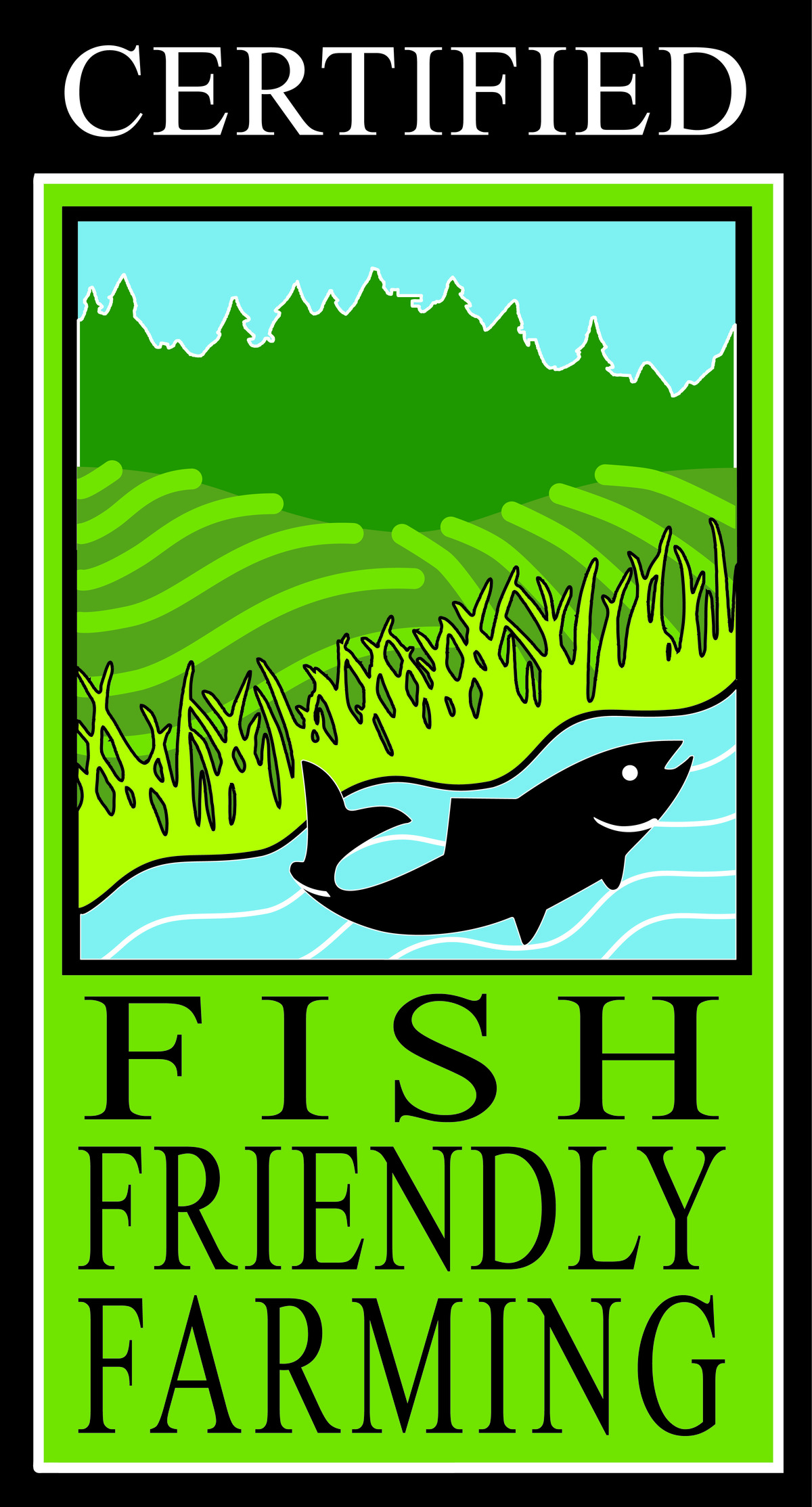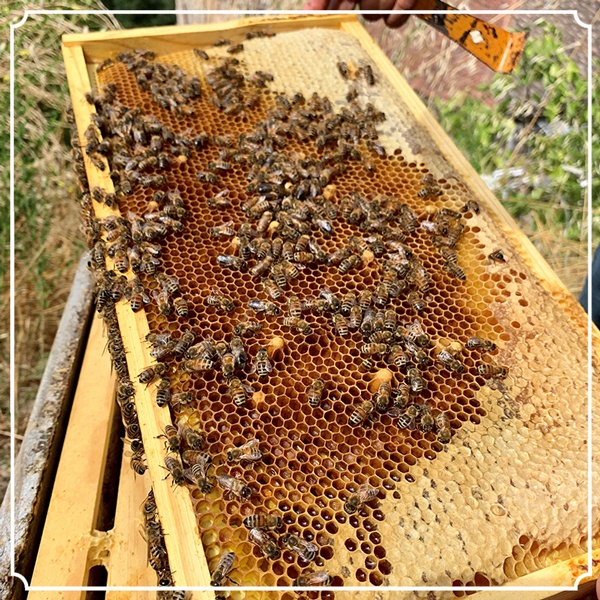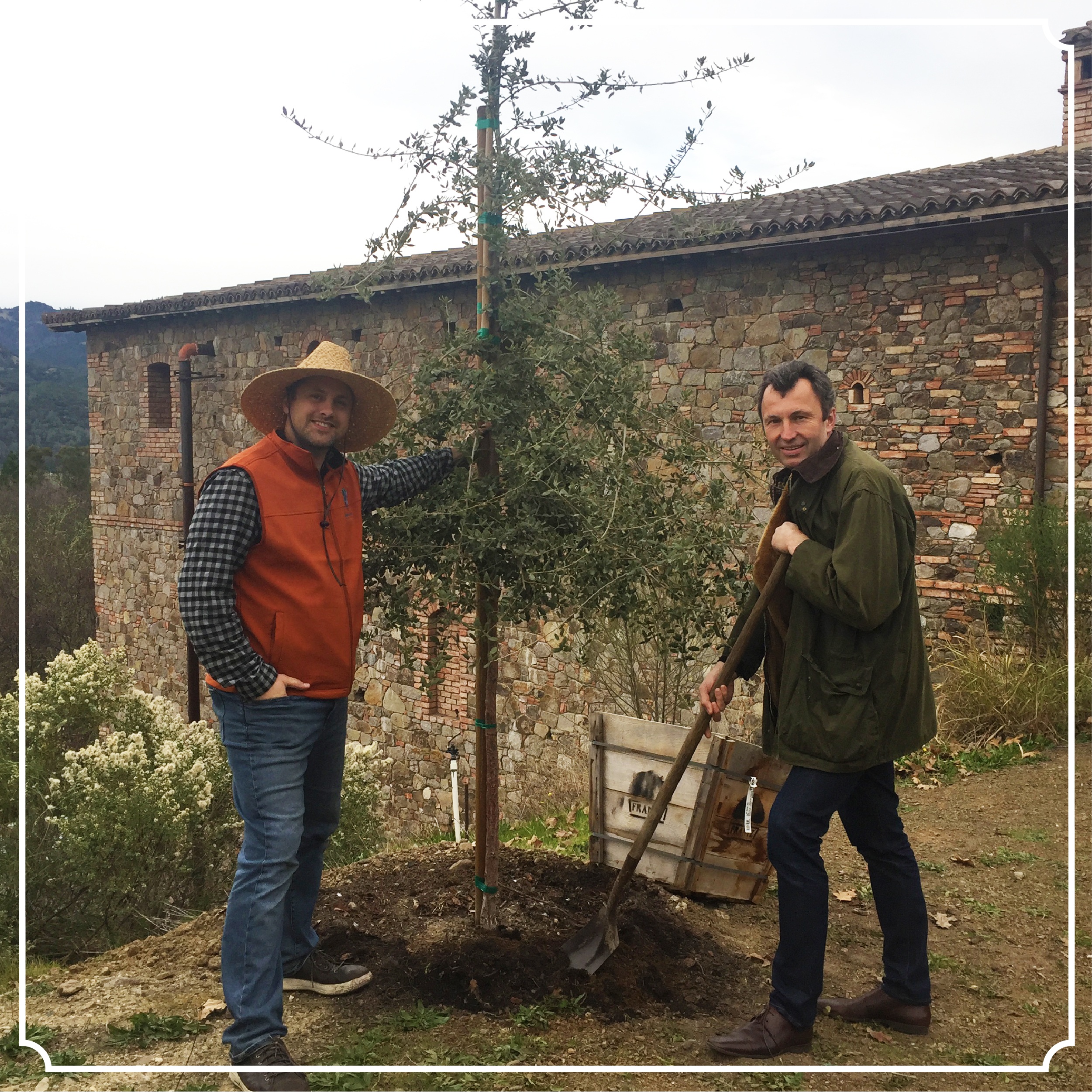
Sustainable Land, Going Organic
“Family owned and operated in the Diamond Mountain Appellation of the Napa Valley, we are dedicated to growing premium grapes that we turn into world class wine. Our commitment to energy, water and green practices will protect the Napa Valley for future generations of citizens and vintners alike. The decisions we make today, like going completely organic at the Castle, will impact our future generations. We are committed to working locally to improve the social, economical and environmental well being of our community. We feel that protecting the environment and doing our part to run sustainable land will lead to great things for future generations.”
– Dario Sattui
♦ Napa Green ♦ Fruit Trees ♦ Water Management ♦ Honey Bees ♦ Solar ♦





Livestock
Working with our vineyard management team and winemakers, Brooks Painter and Peter Velleno, our aim is to make our vineyard a balanced and self-sustaining ecosystem. The sheep will help us to improve soil health by feeding existing microbes in the soil and by returning the macro grazers back to the land. This will create a more holistic vineyard environment and it will increase the tonnage, quality, uniformity, and consistency of our vineyard blocks.
The sheep will keep the weeds to a minimum which translates into fewer tractor passes as we head into the growing season. They’re fertilizing now so we won’t have to truck in compost later. This is a hands-off approach which will improve the vineyard soil by adding better and more suitable microbes to the soil which will improve the quality of the wine.”Integrating livestock for cover crop control, weed control, fuel reduction, and soil fertilization.

Solar
We invested $1.4 million in a 450-kilowatt solar power array. The massive 1162 panel system, with each panel rated for 365 kw, was completed in January of 2022 and is situated on a spot which had been a forested slope but was significantly burned in the Glass Fire that hit the Napa Valley in 2020. “This enormous investment is an important element of our commitment to become as self-sufficient as possible while minimizing our carbon footprint and helping with the climate change crisis. We expect this will offset our energy usage around 80%,” explains Georg Salzner, President, Castello di Amorosa.
The microgrid provides us with an independent power supply during frequent utility grid outages. During times of normal operations, the microgrid reduces utility energy charges and demand charges, resulting in significant operational savings for the winery.

Wastewaster Treatment & Waste
Our wastewater management program goes above and beyond expectation. We use reclaimed water in our vineyards, to keep water waste at minimal levels. We recycle 100% of the water used by cellar staff. Proper SOPs are in place to conserve water. Ensuring all outlets have low flow nozzles or aerators also help us to conserve water.
We consolidate and self haul all plastic wrap from bottling supplies as well as all cardboard to the landfill for recycling. We eliminated the use of Styrofoam when possible. Most green waste is fed to our herd of goats. Overall winery waste is minimal. Downgraded from a 4 yard trash bin to a 96 gallon trash bin. We use copy and printer paper with a minimum of 30% post consumer waste to insure the highest green standards. Currently all the copy paper we order ranges between 30% – 50% recycled paper.

Save The Bees
With environmental stresses resulting in dwindling bee populations worldwide, they felt it was doubly important for us to do whatever possible to help sustain the local bee population. In the vineyards, the presence of bees attracts beneficial insects which help to keep vineyard pests at bay. Lady bugs and similar insects act as natural pesticides against the destructive insects, eliminating the need for dangerous chemicals. Our bees pollinate the herbs and vegetables as well as our numerous fruit trees—fig, peach, pear, plum and apple—growing in our Castello gardens. In addition, the bees help us to maintain our lush grasses; they pollinate the myriad of wildflowers and berries which grow in abundance in the land surrounding the vineyards, returning rich nutrients to the soil and ultimately, to our vines and grapes.d. Read more about our bee & honey project here..

Olive Trees
We are proud to announce the first planting of our Olive Trees surrounding the Castle in Napa Valley. Watch above as President Georg Salzner & vineyard manager David Bejar plant our first olive trees at The Castle! This continues our recent string of sustainability efforts at the Castle.

Fruit Trees
On the Castello property, we planted over 85 fruit trees (including fig, peach, pear, plum and apple tree’s). The fruit from these trees is used to make Castello products & for our staff to enjoy during the summer months. We also planted a Cork Tree, typically harvested every seven years, and are a renewable resource since the tree is not cut down and only the outer layer of bark is removed.
Napa Green Certified Winery
At our 14th century Tuscan-inspired castle and winery Castello di Amorosa, we are on the cutting edge of Green & Sustainable Practices. Napa Green is one of only four sustainable wine-growing programs nationwide offering the opportunity for comprehensive soil-to-bottle certification in both the vineyard and winery. 40% of all of the certified sustainable wineries in CA are in Napa County. These wineries implement more than 100 sustainability and stewardship standards to
– Save energy and water and increase efficiency
– Prevent waste through recycling, composting, and environmentally preferable purchasing
– Reduce GHG emissions and the winery’s carbon footprint
– Commit to social equity
– The whole facility is certified from production to administration to hospitality

Napa Green Certified Land
Napa Green Land is a program that recognizes two regional, third-party vineyard certification programs as meeting our standards for watershed stewardship. These programs facilitate environmental compliance and help growers develop custom, whole-property Farm Plans.
– Prevent erosion and sediment runoff
– Reduce and eliminate potentially harmful inputs
– Conserve water resources through efficient irrigation and frost protection
– Protect and restore riparian habitat
– Contribute to a healthy and thriving Napa River watershed

Certified Organic
CCOF is a nonprofit organization that advances organic agriculture for a healthy world through organic certification, education, advocacy, and promotion. We envision a world where organic is the norm.

Fish Friendly Farming
Fish Friendly Farming is a certification program for agricultural properties managed to restore fish and wildlife habitat and improve water quality. The Chinook salmon and steelhead trout in northern and central California rivers are listed as threatened under the federal Endangered Species Act. Coho salmon are listed as endangered. Many different land uses–urban sprawl, reservoirs, gravel mining, roads and highways, water diversions, grazing, and logging as well as agriculture–have caused the decline of steelhead trout and salmon in California. Fish Friendly Farming (FFF) provides a comprehensive approach for farmers to restore habitat for these endangered species. Many farmers are avid fisherman and willing to implement practices that will recover salmon and steelhead populations. The lifecycle and habitat needs of the salmon and steelhead trout form the basis for the Fish Friendly Farming program. Steelhead trout, Chinook and Coho salmon have a complex lifecycle involving freshwater streams and rivers and the ocean. These fish species are sensitive indicators of ecosystem health. Their recovery and conservation requires that human activities meet high environmental standards. Salmonids are sensitive to changes in water quality and quantity, water temperature, turbidity, and aquatic food webs. The decline of a salmonid population in a creek or river can give an early warning of the decline in the overall health of the environment. By focusing on improving conditions for salmon and trout, the Fish Friendly Farming program takes a comprehensive approach to environmentally friendly land management.


